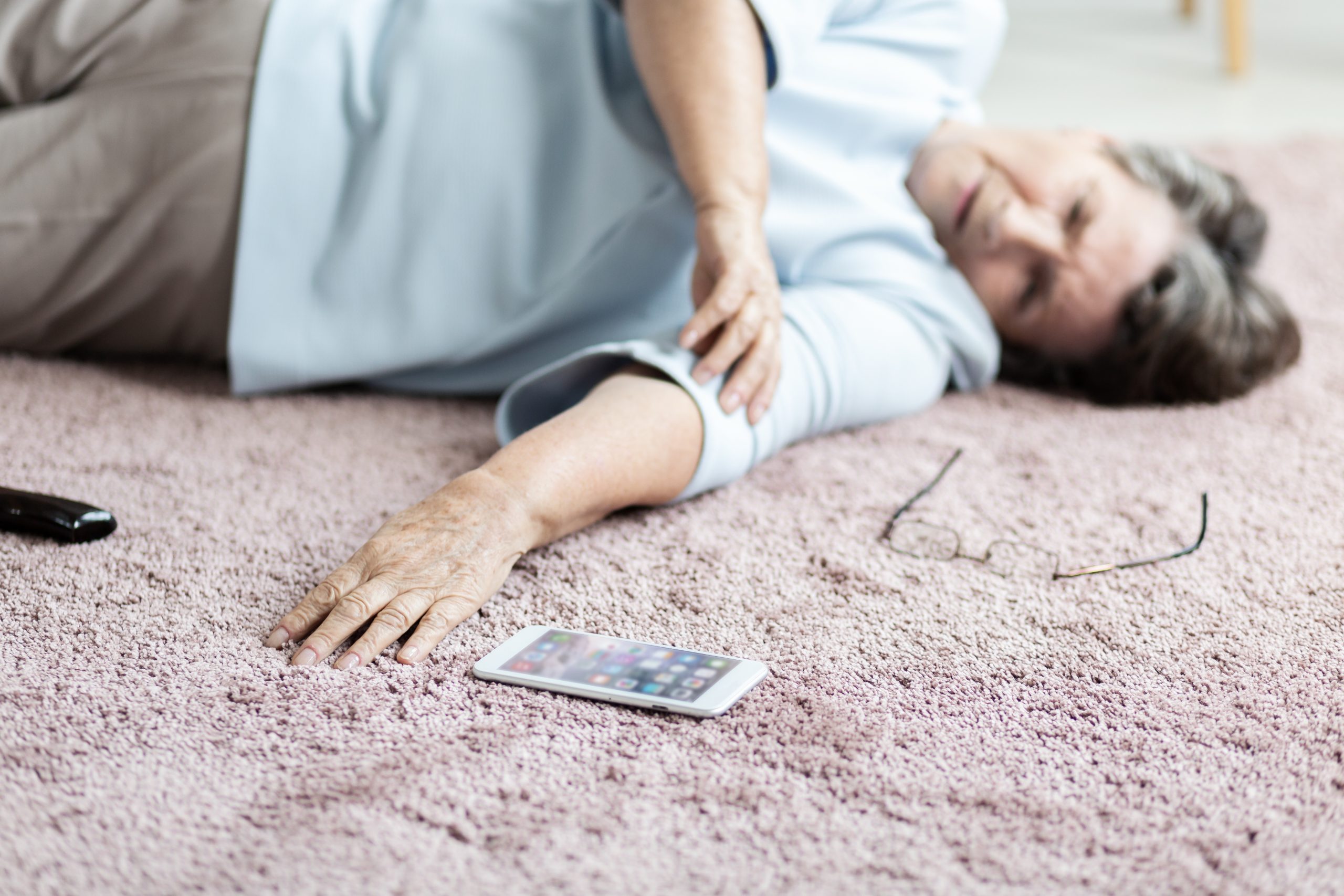How do you know if a fallen person is safe to lift from the floor?
If you’re reading this, you probably provide care that involves responding to older people who have fallen – and checking whether they’re injured may be one of your biggest challenges.
After all, it’s all very well having patient lifting equipment to hand but, if you’re not sure whether it’s safe to lift a person who has fallen, it might just sit in a cupboard! In this case, we understand why you might feel you have to call 999 for an ambulance instead. We get it, you want to be absolutely sure your actions aren’t going to cause further harm or injury.

However, we all know that falls are placing increasing pressure on ambulance services, and response times can result in dangerous long lies. Much of this could be avoided if more care staff were given the skills and tools to check for injury. While every situation will be unique, by following best practice guidance you should be able to make an informed decision about whether a fallen person is safe to lift.
That’s why we’re writing this article, to give you current best practice guidance through our experience of working with hundreds of care homes and community response teams alongside paramedics and geriatricians.
Before we start, let’s be clear about what type of falls we’re discussing here: elderly persons that have tripped, slipped, or lost their balance, either through physical or environmental factors, in settings like care homes or private dwellings. So, if your scenario is something different – inpatient falls in a hospital, for example – then this article probably isn’t going to provide the best advice for you.
So, let’s start with…
The basics of good post falls care
Assess the situation
First, stay calm!
You obviously want to make sure the area is safe for you to work in so you don’t put yourself in harm’s way – although I think we can agree that it’s unlikely there’ll be any immediate danger in settings like care homes. Depending on the situation, you might want to call for help from a colleague – a nurse or senior, for example.
Check for new injuries or symptoms
Next, you need to assess the extent of any injuries or symptoms the person is showing. You can start with the basic ABC of first aid – airways, breathing and circulation. If the person is unresponsive or unconscious, you need to call 999 for an ambulance immediately. Otherwise, reassure the person who has fallen that you’re there to help. They may be showing signs of shock, so you might need to give them a few minutes to recover before deciding on next steps.
Then you need to check for obvious signs of new injuries or symptoms. This might present as pain, swelling, loss of sensation or movement in limbs, or in neurological impairments such as new confusion. You must make sure you check for visible limb deformity, such as a rotated and/or shortened leg indicating hip fracture, and traumatic head injury.
Consider the circumstances of the fall
It’s also important to think about the context in which the fall occurred. Does the person have medical conditions that may have contributed to the fall? Have they recently had a change of medication? It’s always a good idea to refer to care plans to help you understand each situation.
But while this covers the basics, many care providers say they need a definite process with clear guidance to follow to make sure they consistently check everything they should following a fall. Which brings us onto…
Post Falls Decision Support Tools
If you’re responding to a lot of falls, or you’re a care provider who’s concerned to have proper procedures in place, you might want to consider a dedicated post falls decision support tool (sometimes referred to as a post falls protocol). These can help you carry out a fuller assessment so you can make a more informed decision to stand (or not). They can also provide support for care staff responding to falls which may have been unwitnessed, for example.
While many elderly falls are simple slips or trips, and in most cases a 10 min assessment using a post falls decision support tool should give you more than enough confidence you’re making the right decision whether to lift them, there are always going to be particularly complex or unusual scenarios where you have to call on senior clinical expertise to make the right decision.
Here we must be totally honest with you that, alongside the use of accredited post falls assessment tools, it’s going to rely on your professional judgement as a care provider what the appropriate course of action is, in the same way you make decisions about other aspects of a person’s care. What the tools outlined in this article can do is support you in this process.
Having read this article, I hope you now understand exactly what’s involved in deciding if an older person who has fallen is safe to lift from the floor.
We can’t close without noting that, while the focus of this article has been whether the person can be safely lifted from the floor, good post falls care shouldn’t end there. If a person is uninjured and you’ve been able to assist them from the floor, you should continue to monitor them for at least 24 hours for any new injuries or symptoms that become apparent, for example, bruising. You should also consider a multifactorial falls risk assessment to reduce the risk of further falls.
Related articles
How Do You Lift an Elderly Person Who Has Fallen? (With Or Without Equipment)
Where Do Falls Occur The Most?
Get in touch
Got a question or want to send us a message? Let’s talk.